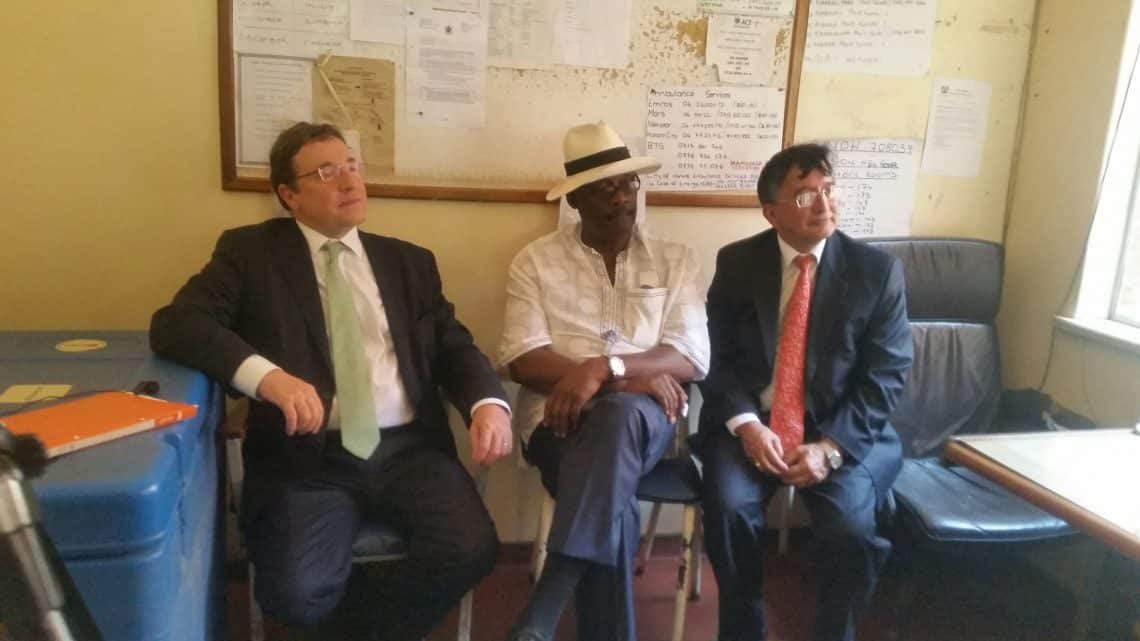By Byron Mutingwende
Health delivery is improving at centres countrywide where solar power units were installed. Speaking during a visit and tour of the solar unit at Budiriro Poly Clinic in Harare on 17 March 2018, David Parirenyatwa, the minister of health and child care who was accompanied by a delegation from the United Nations Development Programme (UNDP) led by its administrator Achim Steiner, said solar power had greatly improved health delivery.
“With these solar units at health centres countrywide, power outages have become a thing of the past. This has also meant an end to loss of vaccines and unnecessary loss of life,” Parirenyatwa said with reference to the installed power equipment, courtesy of the UNDP donation.
Dr. Parirenyatwa said the health system in Zimbabwe is composed of six central hospitals found in Harare and Bulawayo. There are eight provincial hospitals, and 63 district hospitals as well as 1200 health centres around the district hospitals. There are 43 mission hospitals and 23 general hospitals countrywide. In the cities, there are only central hospitals and polyclinics.
“We need intermediate healthcare providers between the polyclinics and central hospitals in the cities. If there were similar services offered at district hospitals here at Budiriro Polyclinic, this centre would have been able to carry out Caesarean operations and X-rays. Children with fractures that come here should not be sent to central hospitals. There is also need to expand the dispensary into bigger pharmacies if resources were available. I am grateful to the UNDP for providing the solar units that have now become the main source of power,” Parirenyatwa said.
Emmanuel Boadi, the Project Manger of the Global Fund in Zimbabwe revealed that the UNDP had so far invested US$10, 8 million worth of solar equipment into the country’s health institutions.
“Throughout the whole country, a total of 405 healthcare centres comprising district hospitals, rural hospitals, polyclinics, healthcare centres and rural clinics have received the solar units. At district hospitals, the UNDP installed 40KW solar units, 10KW units at rural hospitals, 7KW at poly clinics and 5KW units at rural clinics,” Boadi said.
Speaking during the tour of the solar units at Budiriro Poly Clinic, Artwell Chindove, an electrician and maintenance officer of the City of Harare said the initiative had come as a reliable alternative source of power.
Dr. George Mtahwa, the Acting District Medical Officer for the West South West District comprising of the Budiriro, Glenview and Mufakose suburbs, shared that view.
“These solar units came as a great relief to the healthcare workers and the patients at large. In the past, we endured intermittent power outages, but sometimes we won’t notice the outages since the unit switches automatically immediately the moment the electricity will be gone,” Dr. Mtahwa said.
David Mufara, the Nurse-in-Charge of Budiriro Poly Clinic said the clinic has two distinct departments: the primary care clinic and the maternity unit.
“At the primary care clinic, we focus on the treatment minor aliments. On a single day, we treat at least 200 patients in that department. On the other hand, we have the maternity clinic that operates 24 hours non-stop. We have 21 beds in that ward and have an average of 215 births every month,” Mufara said.
The 10KW solar unit at Budiriro Clinic is powered by 36 solar panels. The solar panels have a lifespan of 25 years while the batteries last for five year. The UNDP and the ministry of health are working on a sustainability plan to be in place by June. The UNDP provided the solar units to 12 polyclinics in Harare.
The solar units have brought many benefits. The code chain is now working properly because vaccines can now be kept at optimum temperatures. Health information dissemination is improved for quick decision-making since laboratory diagnosis results are taking a shorter time to be availed because of the constant supply of power. The maternal mortality rate at the polyclinic was reduced because there is now efficient lighting throughout the baby delivery processes.
